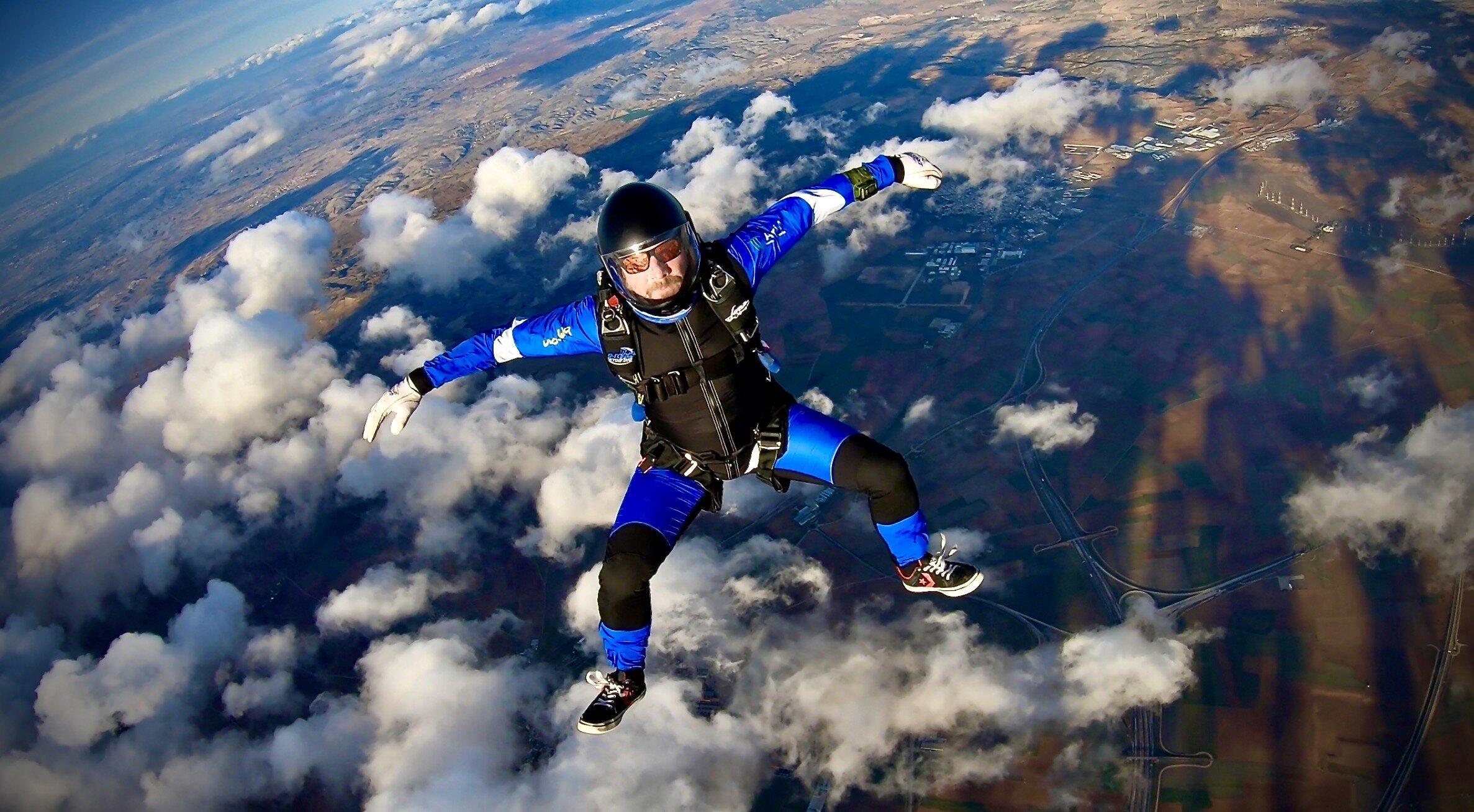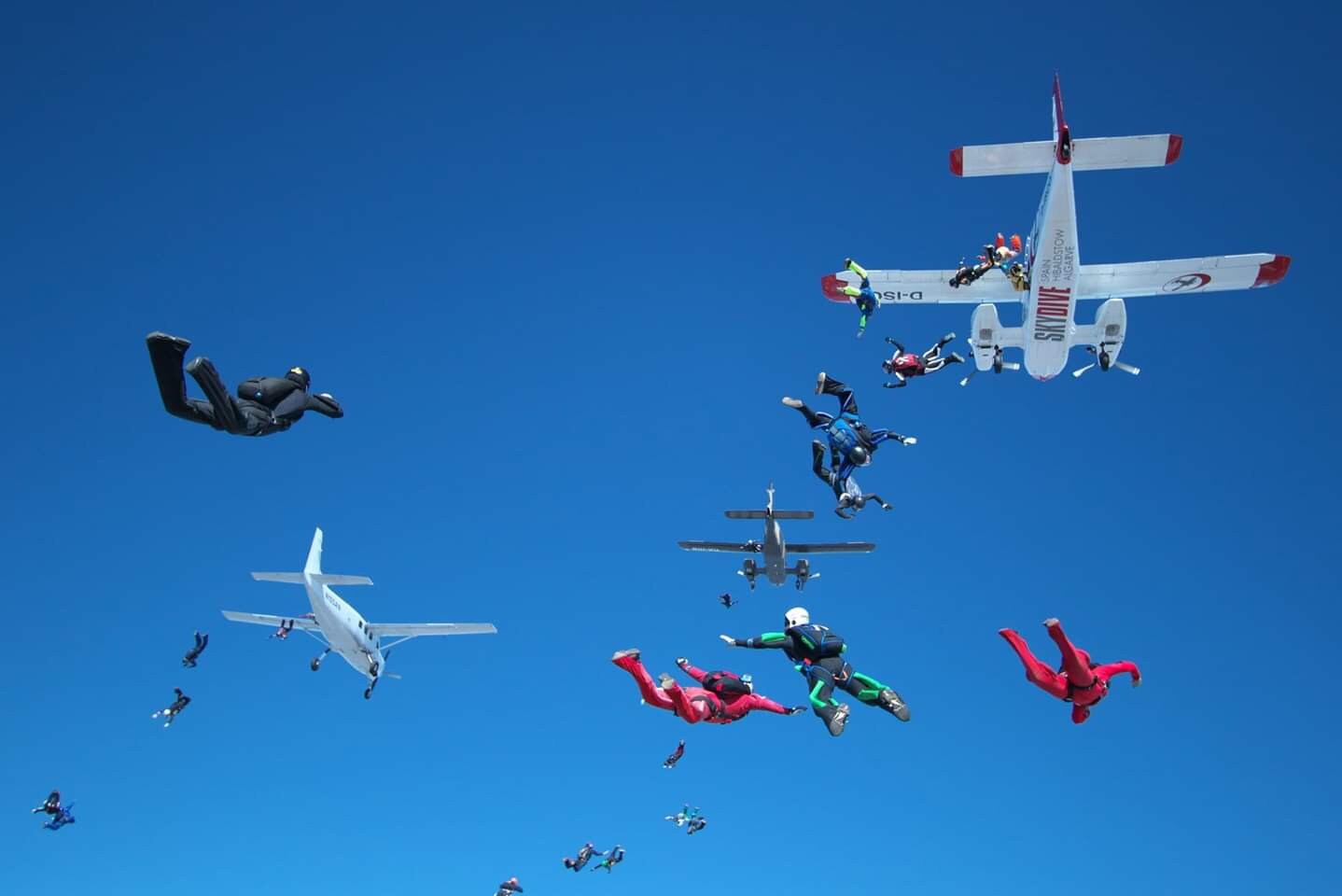
Skydive Coaching
Take your skills to the next level on one of our trips.
The Evolution Skydiving team organises several trips a year abroad to provide exciting opportunities for experienced skydivers who are looking to develop their skills and progress in the sport.
On our trips, we bring along a number of coaches in different disciplines. Our coaches can provide you with structured training sessions to develop your skydiving skills. A typical coached jump will consist of a period of ground-based instruction/ briefing to prepare you for the specific goals of the jump; the jump itself (with in-air video), followed by a thorough debriefing after the jump has been completed. The main type of disciplines that Evolution Skydiving offer coaching in are Formation Skydiving, Freefly and Tracking.
Our trips are also for those who just want to try out a new dropzone and fun jump to your heat’s content. Check out our upcoming trips to see where we are going next.
Formation Coaching
Formation Skydiving (FS) is one of the classic disciplines of skydiving where flyers maintain a belly-down orientation and build formations with accompanying teammates.
Our coaches can offer you training that allows you to refine, improve and learn new skills in belly flying, while at the same time learning the most important lesson in skydiving – how to stay safe.
The FS qualification, FS1, is most often the first qualification a new skydiver achieves following the completion of an AFF course as it enables you to jump with other skydivers. The FS1 programme offered by Evolution Skydiving follows the British Skydiving recommended FS progression system, teaching you the basics needed to be able to fly with your friends and in bigger groups.
After successfully learning the skills required and completing your FS1 qualifying 4‑way skydive, you will receive your FS1 sticker, which shows that you’ve got the skills to skydive safely with others.

Freefly Coaching
Freeflying is an expansion of skydiving that extends into vertical flight, where the flyer is in an upright position (falling feet first) or in an inverted position (falling head first). These positions increase freefall speeds and make new types of formations and routines possible.
Once you’ve mastered the basic “belly flying” skills, freefly coaching allows you to expand your abilities and fully understand the aerodynamic power of your body in freefall. Freeflying can, and usually does, involve constant transitions in position and speeds, with vertical and horizontal orientations.
Our coaches can offer you “head-up” coaching whilst you work towards your FF1 qualification, as well as the more advanced “head-down” coaching as you work towards your FF2 qualification.
Tracking Coaching
Tracking is where skydivers take a body position to achieve a high forward speed, allowing them to cover a greater horizontal distance over the ground.
Our coaches can take you through all the different aspects of tracking. First you will start with the basic flat track to achieve your TR1 qualification. This will not only build a solid foundation for progressing in the tracking discipline, but will help with other disciplines at the end of group jumps to achieve maximum separation from other jumpers before parachute deployment.
You can then continue with the tracking progression programme to learn how to track on your back (TR2) and the more advances technique of angle tracking (TR3).






